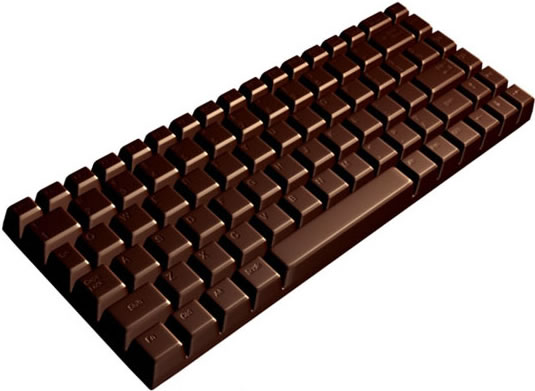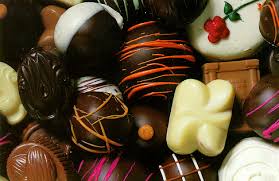 Although cocoa trees grew wild in Central America since pre-historic times, it wasn’t until around 600 AD when the Maya Indians established cocoa plantations in the Yucatan region of Mexico. The Mayans, and later the Aztecs, took the cocoa bean from the cocoa trees and processed it into a drink called “xocoatl” or “chocoatl.” This word, in the Mexican Indian language, means “foam water.” “Choco” means “foam” and “atl” means “water.” This chocolate was consumed only in the liquid form.
Although cocoa trees grew wild in Central America since pre-historic times, it wasn’t until around 600 AD when the Maya Indians established cocoa plantations in the Yucatan region of Mexico. The Mayans, and later the Aztecs, took the cocoa bean from the cocoa trees and processed it into a drink called “xocoatl” or “chocoatl.” This word, in the Mexican Indian language, means “foam water.” “Choco” means “foam” and “atl” means “water.” This chocolate was consumed only in the liquid form.
Chocolate was extremely important in the life of the Aztec Indians. According to Arthur W. Knapp, author of “The Cocoa And Chocolate Industry,” the Aztecs believed that chocolate was consumed by the Gods in paradise and that the cocoa seed was brought to earth as a special blessing for the people here by the God of the Air.
| |
For the next century, chocolate became a top secret in Spain. Only monks in monasteries were allowed to process cocoa beans into chocolate because Spain wanted to keep the secret of processing chocolate from becoming known in the other European countries. This remained a secret in Spain for almost a hundred years. Finally, with the decline of Spain’s power, the secret leaked out. In 1606, an Italian traveler in Spain, Antonio Carletti, discovered the secret of chocolate and brought it to the other European nations.
In addition to Carletti’s discovery, chocolate was popularized even further by the marriage of Spanish Princess Maria Theresa and King Louis XIV in 1616. Maria Theresa gave chocolate to the French king as a wedding present, which helped popularize chocolate in France.
Because of its great expense, chocolate was considered to be a drink of only the elite class for the rest of the 17th century. As the Spanish historian Oviedo noted: "None but the rich and noble could afford to drink chocolatl as it was literally drinking money. Cocoa passed currency as money among all nations.”
By early in the 18th century, the price of chocolate had dropped so many people outside of the wealthy class could enjoy it. During this era, chocolate houses became as popular in England as coffee houses. In fact, there were chocolate houses that catered to only certain types of clientele such as politicians, gamblers, and the literati.
One interesting fact about chocolate in England was that the Quakers participated in this business very heavily. One reason was that the Quakers hoped to persuade the poor to give up drinking alcohol in favor of the healthier chocolate drink. This involvement of the Quakers in chocolate continued with their emigration to Colonial America, primarily to Pennsylvania. It was one of the descendants of those colonial Pennsylvania Quakers, Milton Hershey, who was later to become perhaps the most important name in the chocolate industry.







